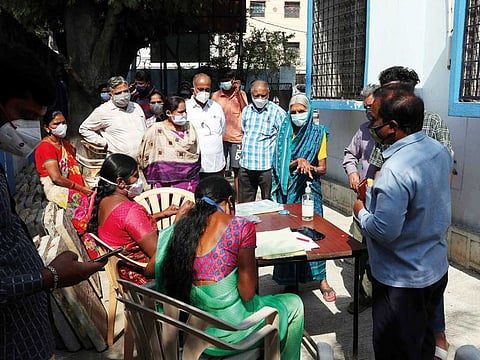India strengthens resilience of its health systems
Following two waves of Coronavirus, India's hospitals are better prepared for the future

For Indian healthcare system, there was a duality to the coronavirus. On one hand, it placed an uncomfortable spotlight on the flaws of the country’s primary and tertiary infrastructure and pandemic preparation. On the other, this once-in-a-lifetime event sparked an unprecedented transformation of the ecosystem, with a wave of innovative technology helping to build safeguards for the future.
“The pandemic has taught the need for digitisation of services,” says Dr Shamsheer Vayalil, Chairman and Managing Director of VPS Healthcare, an integrated service provider with 24 hospitals, more than 125 health centres and 10,000 employees working across India, the Middle East and Europe. “It could range from consultation to availing services remotely.”
An evolving care system
Another major takeaway for Dr Vayalil is the shortcomings of the present care system. “We have to construct a care model that would be able to deliver desirable medical outcomes by defining appropriate care for specific populations. Realigning resources, improving access to healthcare, bridging the gap between urban and rural settings in terms of healthcare facilities, and adopting standardised data analytics are crucial.”
Sangita Reddy, Joint Managing Director of Apollo Hospitals Group, which is currently handling around 25,000 coronavirus cases a day across its network, believes the pandemic highlighted a need to be vigilant, adaptable and open to change. “As we faced new variants causing a second and third wave, we realised that we cannot let our guard down and adopted a resilient hybrid healthcare delivery design that is pandemic-proof.”
Bridging the gap
Dr Azad Moopen, Founder Chairman and Managing Director of Aster DM Healthcare, explains, “The budget should incentivise the private sector to improve medical facilities in Tier 2 and 3 cities and rural areas to bridge the healthcare urban-rural divide.
“While the last union budget saw a 137 per cent increase in healthcare spending which accounted for 1.8 per cent of GDP spend, it would help to increase the allocation to at least 3 per cent to ensure execution of many of the initiatives. Technological innovations and government initiatives are transforming the healthcare industry in India.”
Dr Vayalil says the success of the country’s vaccination drive, which is the world’s largest, is expected to minimise the impact of a third wave. “Vaccination is the key priority and now we are focusing on inoculating children. The administration of booster doses is progressing. The healthcare ecosystem has been ramped up to face any situation, and the situation is closely monitored.”
Reddy agrees. “We are much better prepared this time. Omicron has been identified and flagged, quickly boosted by improved genetic surveillance.” Due to the increased transmissibility of this variant, more doctors, nurses and paramedical staff are testing positive in the third wave. “Even if only mild, this will result in many doctors, nurses and paramedical staff [being unable to work]. We are putting in place plans including training students to step in if the need arises.”
Investing in science
Investment into scientific research has already left the country better prepared to deal with future pandemics. “India has developed a robust genomic sequencing system and enhanced its surveillance for pathogen variants. These steps have empowered the nation to analyse the trajectory of the pandemic, emergence of new variants, and brace for future outbreaks. The authorities are strenuously working to foster innovations in disease surveillance by strengthening bioinformatics technology and leveraging data science for forecasting and predicting disease outbreaks and stepping up measures to contain them.”
Reddy believes preparedness has different aspects. “The framework includes political, community, and resources and a concentrated strengthening of the primary healthcare network. Genomic sequencing and surveillance through collaboration on a global scale is necessary. Strict monitoring will allow us to build a complete picture with timely data and take informed decisions on appropriate responses and mitigation plans.”
Both Reddy and Dr Vayalil believe public-private sector co-operation is crucial.
Dr Moopen, whose Indian operation spans five states with 14 hospitals, 77 pharmacies, nine labs and 3,834 beds, says, “Although the past two years have been the toughest in recent history of mankind, India managed to keep fuelling its growth story – fighting against multiple waves of the deadly coronavirus that disrupted lives. India has managed to come out least scarred and is poised for a double-digit GDP growth in the next financial year.” ●
Sign up for the Daily Briefing
Get the latest news and updates straight to your inbox



